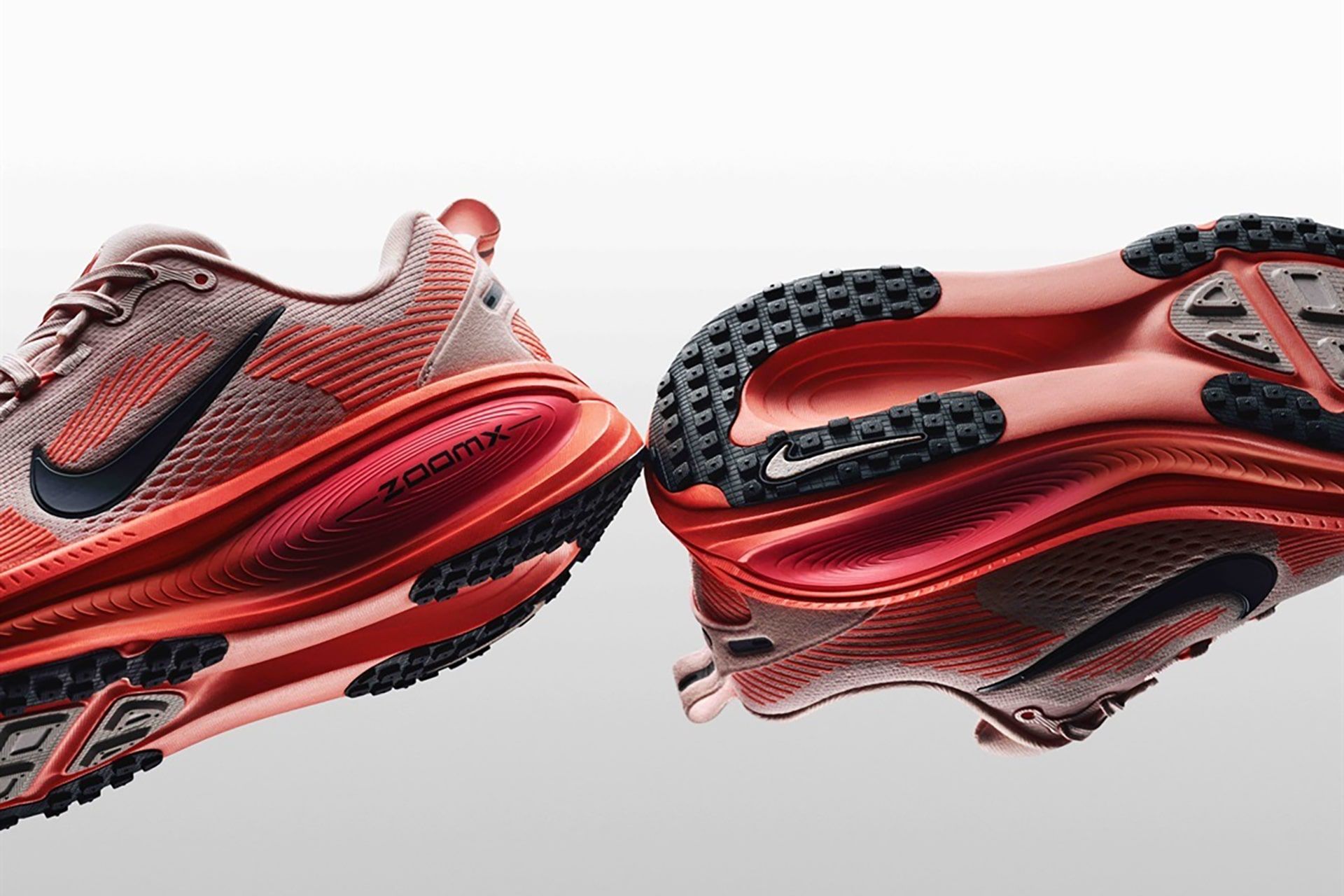- Weekly Olio
- Posts
- Nike Finds Its Second Wind: Inside the Brand’s Big Bet on “Sport Offense”
Nike Finds Its Second Wind: Inside the Brand’s Big Bet on “Sport Offense”
Nike’s “Sport Offense” strategy signals a bold reset. Discover how CEO Heidi O’Neill is refocusing the brand on performance, cutting clutter, and recharging growth across China, women’s sport, and outdoor categories.
Salutations, Olio aficionados! 👋
Welcome to the 178th edition of Weekly Olio. We’re thrilled to introduce a fresh new twist to your Sundays: Publisher Parmesan, our hand-picked, thoughtfully crafted edition designed to spark inspiration and insights for the week ahead.
It’s the perfect way to unwind, recharge, and prepare for the week with something truly worth savoring.
If you’re new here and you’re looking for more long-form, crispy writing, click the link to subscribe under this GIF 👇

A word from our Sponsors…
CTV ads made easy: Black Friday edition
As with any digital ad campaign, the important thing is to reach streaming audiences who will convert. Roku’s self-service Ads Manager stands ready with powerful segmentation and targeting — plus creative upscaling tools that transform existing assets into CTV-ready video ads. Bonus: we’re gifting you $5K in ad credits when you spend your first $5K on Roku Ads Manager. Just sign up and use code GET5K. Terms apply.
Nike Finds Its Second Wind: Inside the Brand’s Big Bet on “Sport Offense”
Nike just ran its most important race of the year — and crossed the finish line with a surprise lead.
After months of investor skepticism, the sportswear giant posted stronger-than-expected fiscal 2025 results, sending its stock soaring 15.25% in a single day — the sharpest rise in nearly four years. With USD 46.3 billion in annual revenue and a notable USD 6.585 billion coming from Greater China, Nike is signaling something many had doubted: it’s not just alive — it’s resetting for a comeback.
This was the first full-year scorecard under new CEO Heidi O’Neill. And while she admitted the company still hasn’t hit its internal benchmarks, a new playbook is already in motion — one built around a core thesis: that doubling down on sport, not lifestyle, is how Nike gets its edge back.

Nike’s new strategy, dubbed “Sport Offense,” isn’t just a marketing tagline — it’s a company-wide reset. The goal? Get back to the basics of what built Nike: sport-first storytelling, cleaner product lines, faster execution, and local relevance.
In practice, that’s showing up in revamped product releases — like the Vomero 18, which did over USD 100 million in sales in just three months — and a push to reclaim dominance in running, basketball, and youth culture. It’s a bet that product innovation and athlete credibility still matter — and perhaps matter even more in a market saturated with lookalikes.
Faith Kipyegon and the Power of Narrative
Two hours before the earnings dropped, Kenyan middle-distance star Faith Kipyegon made her first public attempt to break the four-minute mile — an audacious feat no woman has yet achieved. She didn’t break the record, but her effort — part of Nike’s new Breaking4 initiative — made a different kind of impact.
It wasn’t just about time on the clock. It was about telling a bold story: that women can — and should — chase goals long considered impossible.
This is classic Nike — using athletes and audacity to shift culture. It also reflects a broader shift in the company’s brand strategy: move from aspiration to action, from hype to performance.

China Delivers — and Gets More Attention
One of the biggest surprises of the year? Greater China. After years of erratic growth, the region contributed USD 1.476 billion in Q4 alone — a beat that helped stabilize global investor sentiment.
Nike has spent the year going local. It flew marathon legend Eliud Kipchoge to Beijing and Guangzhou, launched the Next Stop Dongdan basketball initiative, and brought WNBA star Sabrina Ionescu to Shanghai to connect with younger fans. A smart move, as emotional resonance and community often outweigh performance specs in the Chinese market.
Nike’s ability to blend global stars with local storytelling is becoming a playbook — and in China, it’s finally paying off.
Marketing ideas for marketers who hate boring
The best marketing ideas come from marketers who live it. That’s what The Marketing Millennials delivers: real insights, fresh takes, and no fluff. Written by Daniel Murray, a marketer who knows what works, this newsletter cuts through the noise so you can stop guessing and start winning. Subscribe and level up your marketing game.
Cutting Back to Run Faster
Behind the scenes, Nike has been cleaning house. It slashed over 30% of its legacy footwear lineup in Q4 and brought down inventory in China by 11%. Retail partners in North America, EMEA, and APAC all reported stronger holiday season orders — a sign that Nike’s SKU discipline and supply chain resets are starting to bite.
O’Neill noted that the company is aiming to clear remaining inventory over the next two quarters and return to full channel health by early fiscal 2026.
This matters. For years, Nike’s bloated product lines and high SKU count clogged its ability to innovate quickly. Now, a more focused lineup gives it both cost discipline and creative room to maneuver.
Tapping New Growth Levers: Women, Kids, and the Outdoors
While core categories get streamlined, Nike is going hard after under-tapped segments:
Women: The Breaking4 campaign, “After Dark Tour” night runs, and fashion-focused events like Victory Lap during Shanghai Fashion Week are all helping Nike finally make a meaningful dent in women’s performance and lifestyle categories. Its women’s basketball line is up 50% YoY.
Kids: Nike Kids led Tmall’s sneaker and sports categories during the 618 shopping festival, and co-branded campaigns with Lego have added fuel.
Outdoor: The ACG (All Conditions Gear) line is gaining traction, boosted by events like the Chongli 168 Ultra Trail and training camps across China. With more consumers shifting toward outdoor fitness, this category may be Nike’s next big runway.

Culture, Performance, and the Long Game
From Breaking2 with Kipchoge to Breaking4 with Kipyegon, Nike has always known how to push the limits of both sport and imagination. The difference now is that it’s doing so with tighter execution and sharper product-market alignment.
No one is calling it a full comeback yet. Nike still has real competition — from Adidas in basketball, from On and Hoka in running, and from Chinese brands like Anta and Li-Ning on home turf. But with Sport Offense, Nike is showing it’s still willing to evolve — and fight — like a challenger brand.
For a company whose entire identity is rooted in motion, that might be exactly the energy it needs.
Interested in learning more about sports? Check out our previous coverage here:
Learn from this investor’s $100m mistake
In 2010, a Grammy-winning artist passed on investing $200K in an emerging real estate disruptor. That stake could be worth $100+ million today.
One year later, another real estate disruptor, Zillow, went public. This time, everyday investors had regrets, missing pre-IPO gains.
Now, a new real estate innovator, Pacaso – founded by a former Zillow exec – is disrupting a $1.3T market. And unlike the others, you can invest in Pacaso as a private company.
Pacaso’s co-ownership model has generated $1B+ in luxury home sales and service fees, earned $110M+ in gross profits to date, and received backing from the same VCs behind Uber, Venmo, and eBay. They even reserved the Nasdaq ticker PCSO.
Paid advertisement for Pacaso’s Regulation A offering. Read the offering circular at invest.pacaso.com. Reserving a ticker symbol is not a guarantee that the company will go public. Listing on the NASDAQ is subject to approvals.
That’s all for this week. If you enjoyed this edition, we’d really appreciate if you shared it with a friend, family member or colleague.
We’ll be back in your inbox 2 PM IST next Sunday. Till then, have a productive week!
Disclaimer: The views, thoughts, and opinions expressed in the text belong solely to the author, and not necessarily to the author's employer, organization, committee or other group or individual.




Reply